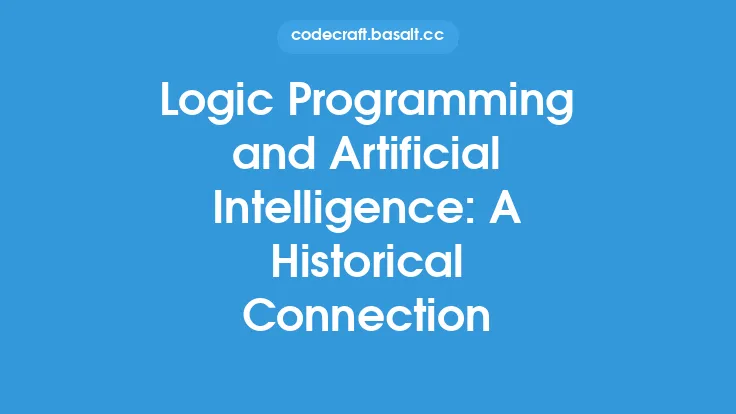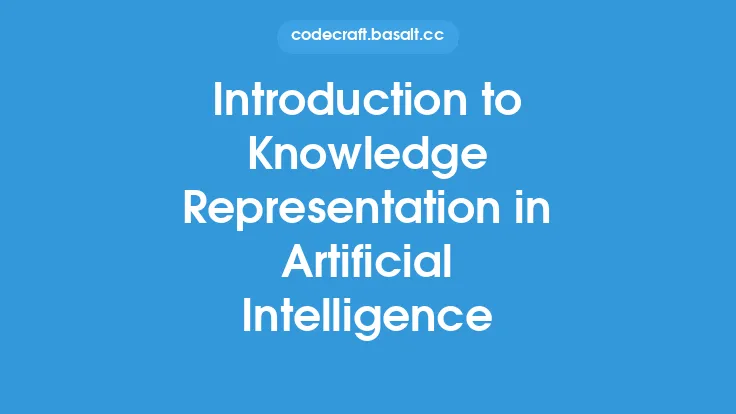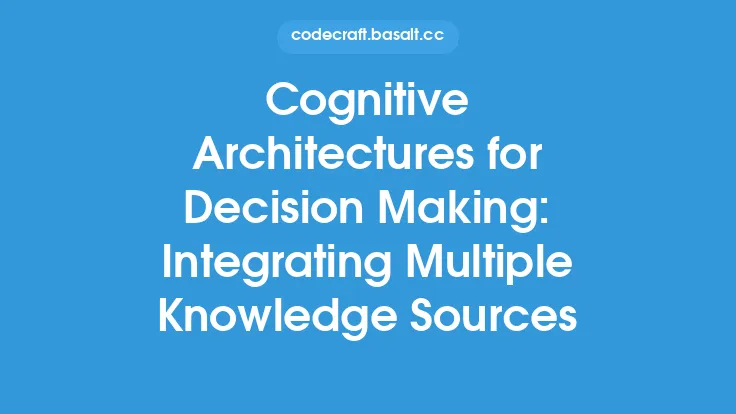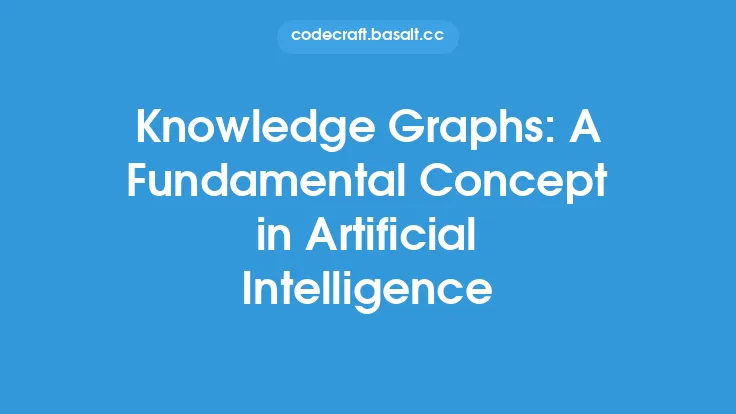Planning and decision making are crucial components of artificial intelligence (AI), enabling systems to make informed choices and achieve specific goals. These processes involve a series of complex steps, from identifying objectives and evaluating options to selecting the best course of action and executing it. In the context of AI, planning and decision making are deeply intertwined with reasoning and problem-solving, as they rely on the ability to analyze situations, consider multiple perspectives, and adapt to changing circumstances.
Introduction to Planning in AI
Planning in AI refers to the process of generating a sequence of actions to achieve a specific goal or set of goals. This involves identifying the initial state, defining the objectives, and determining the most effective way to reach the desired outcome. Planning algorithms can be categorized into two main types: plan-space planning and state-space planning. Plan-space planning focuses on the generation and manipulation of plans, whereas state-space planning emphasizes the exploration of the state space to find a valid plan. AI systems use various planning techniques, such as graph planning, planning as satisfiability, and planning with machine learning, to tackle complex problems and adapt to dynamic environments.
Decision Making in AI Systems
Decision making is a critical aspect of AI, as it enables systems to select the best option from a set of alternatives. This process involves evaluating the potential outcomes of each choice, considering factors such as uncertainty, risk, and reward. AI systems use various decision-making techniques, including decision trees, Bayesian networks, and Markov decision processes (MDPs). MDPs, in particular, provide a powerful framework for modeling decision-making problems, as they can handle complex, dynamic environments and uncertain outcomes. By combining planning and decision making, AI systems can generate effective plans and adapt to changing circumstances, ensuring that they achieve their objectives in a efficient and optimal manner.
Planning and Decision Making Under Uncertainty
In real-world applications, AI systems often face uncertainty and incomplete information, which can make planning and decision making more challenging. To address these issues, AI researchers have developed various techniques, such as probabilistic planning, robust planning, and planning with partial observability. Probabilistic planning involves modeling uncertainty using probability distributions, while robust planning focuses on generating plans that are resilient to unexpected events. Planning with partial observability, on the other hand, enables AI systems to make decisions based on incomplete or imperfect information. By incorporating these techniques into their planning and decision-making processes, AI systems can better handle uncertainty and achieve their objectives in complex, dynamic environments.
Multi-Agent Planning and Decision Making
In many real-world applications, AI systems need to interact with other agents, whether they are human or artificial. Multi-agent planning and decision making involve coordinating the actions of multiple agents to achieve a common goal or set of goals. This requires AI systems to communicate, negotiate, and cooperate with each other, taking into account factors such as conflicting objectives, limited resources, and uncertain outcomes. AI researchers have developed various techniques for multi-agent planning and decision making, including game theory, distributed constraint optimization, and multi-agent reinforcement learning. By enabling AI systems to collaborate and coordinate their actions, multi-agent planning and decision making can lead to more effective and efficient solutions to complex problems.
Applications of Planning and Decision Making in AI
Planning and decision making have numerous applications in AI, ranging from robotics and autonomous vehicles to healthcare and finance. In robotics, planning and decision making enable robots to navigate complex environments, manipulate objects, and interact with humans. Autonomous vehicles, on the other hand, rely on planning and decision making to navigate roads, avoid obstacles, and ensure safe transportation. In healthcare, AI systems use planning and decision making to diagnose diseases, develop personalized treatment plans, and optimize patient outcomes. In finance, planning and decision making enable AI systems to analyze market trends, predict stock prices, and make informed investment decisions. By applying planning and decision making to these domains, AI systems can generate effective solutions, improve efficiency, and enhance decision quality.
Challenges and Future Directions
Despite the significant progress made in planning and decision making, there are still several challenges that need to be addressed. One of the major challenges is scalability, as planning and decision-making problems can become increasingly complex and computationally expensive. Another challenge is uncertainty, as AI systems need to handle incomplete or imperfect information in real-world applications. Additionally, AI systems need to be able to explain their planning and decision-making processes, ensuring transparency and trustworthiness. To address these challenges, AI researchers are exploring new techniques, such as deep learning, transfer learning, and human-AI collaboration. By advancing the state-of-the-art in planning and decision making, AI systems can become more effective, efficient, and trustworthy, leading to significant benefits in a wide range of applications.





